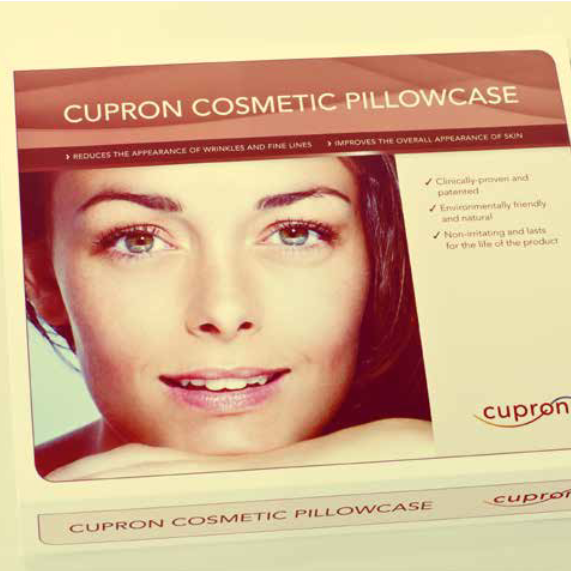Transforming ordinary to extraordinary
Main Article Content
Abstract
Cupron is a company in Israel that permanently incorporates microscopic particles of copper to different substrates. They have achieved transforming common use products such as socks and pillows, into solutions to the health and well-being of the people.
Article Details
References
Borkow G., 2012. “Using copper to fight microorganisms”, Current Chemical Biology.
Borkow G. and Monk A.B., 2012. “Fighting nosocomial infections with biocidal nonintrusive hard and soft surfaces”, World Journal Clinical Infectious Diseases.
Borkow G. and Mellibovsky J.C., 2012. “Resolution of skin maladies of the trapped Chilean miners: the unplanned underground copperimpregnated antifungal socks ‘trial’”, Archives of Dermatology.
Borkow G. and Gabbay J., 2008. “Biocidal textiles can help fight nosocomial infections”, Medical Hypotheses.
Borkow G. and Gabbay J., 2004. “Putting copper into action: copper-impregnated products with potent biocidal activities”, FASEB Journal.
Dollwet H.H.A. and Sorenson J.R.J., 2001. “Historic uses of copper compounds in medicine”, Trace Elements in Medicine.
Faúndez G., Troncoso M., Navarrete P., Figueroa G., 2004. “Antimicrobial activity of copper surfaces against suspensions of Salmonella enterica and Campylobacter jejuni”, BMC Microbiology.
Gabbay J., Mishal J., Magen E., Zatcoff R.C., Shemer-Avni Y., Borkow G., 2006. “Copper oxide impregnated textiles with potent biocidal activities”, Journal of Industrial Textiles.
Lazary A., Weinberg I., Vatine J.J. et al., 2014. “Reduction of healthcare-associated infections in a long-term care brain injury ward by replacing regular linens with biocidal copper oxide impregnated linens”, International Journal of Infectious Diseases.
Malnick S., Bardenstein R., Huszar M., Gabbay J., Borkow G., 2008. “Pyjamas and sheets as a potential source of nosocomial pathogens”, Journal of Hospital Infection.
Monk A.B., Kanmukhla V., Trinder K., Borkow G., 2014. “Potent bactericidal efficacy of copper oxide impregnated non-porous solid surfaces”, BMC Microbiology.
O’Brien P.A., Kulier R., Helmerhorst F.M., Usher- Patel M., D’Arcangues C., 2008. “Coppercontaining, framed intrauterine devices for contraception: a systematic review of randomized controlled trials”, Contraception.
Sarjomaa M., Urdahl P., Ramsli E., Borchgrevink- Lund C.F., Ask E., 2011. “Prevention of Legionnaires disease in hospitals”, Tidsskr Nor Laegeforen.
Schmidt M.G., Banks A.L., Salgado C.D., 2014. “Role of the microbial burden in the acquisition and control of healthcare associated infections: the utility of solid copper surfaces”.
Thneibat A., Fontana M., Cochran M.A. et al., 2008. “Anticariogenic and antibacterial properties of a copper varnish using an in vitro microbial caries model”, Operative Dentistry.
Borkow G. and Monk A.B., 2012. “Fighting nosocomial infections with biocidal nonintrusive hard and soft surfaces”, World Journal Clinical Infectious Diseases.
Borkow G. and Mellibovsky J.C., 2012. “Resolution of skin maladies of the trapped Chilean miners: the unplanned underground copperimpregnated antifungal socks ‘trial’”, Archives of Dermatology.
Borkow G. and Gabbay J., 2008. “Biocidal textiles can help fight nosocomial infections”, Medical Hypotheses.
Borkow G. and Gabbay J., 2004. “Putting copper into action: copper-impregnated products with potent biocidal activities”, FASEB Journal.
Dollwet H.H.A. and Sorenson J.R.J., 2001. “Historic uses of copper compounds in medicine”, Trace Elements in Medicine.
Faúndez G., Troncoso M., Navarrete P., Figueroa G., 2004. “Antimicrobial activity of copper surfaces against suspensions of Salmonella enterica and Campylobacter jejuni”, BMC Microbiology.
Gabbay J., Mishal J., Magen E., Zatcoff R.C., Shemer-Avni Y., Borkow G., 2006. “Copper oxide impregnated textiles with potent biocidal activities”, Journal of Industrial Textiles.
Lazary A., Weinberg I., Vatine J.J. et al., 2014. “Reduction of healthcare-associated infections in a long-term care brain injury ward by replacing regular linens with biocidal copper oxide impregnated linens”, International Journal of Infectious Diseases.
Malnick S., Bardenstein R., Huszar M., Gabbay J., Borkow G., 2008. “Pyjamas and sheets as a potential source of nosocomial pathogens”, Journal of Hospital Infection.
Monk A.B., Kanmukhla V., Trinder K., Borkow G., 2014. “Potent bactericidal efficacy of copper oxide impregnated non-porous solid surfaces”, BMC Microbiology.
O’Brien P.A., Kulier R., Helmerhorst F.M., Usher- Patel M., D’Arcangues C., 2008. “Coppercontaining, framed intrauterine devices for contraception: a systematic review of randomized controlled trials”, Contraception.
Sarjomaa M., Urdahl P., Ramsli E., Borchgrevink- Lund C.F., Ask E., 2011. “Prevention of Legionnaires disease in hospitals”, Tidsskr Nor Laegeforen.
Schmidt M.G., Banks A.L., Salgado C.D., 2014. “Role of the microbial burden in the acquisition and control of healthcare associated infections: the utility of solid copper surfaces”.
Thneibat A., Fontana M., Cochran M.A. et al., 2008. “Anticariogenic and antibacterial properties of a copper varnish using an in vitro microbial caries model”, Operative Dentistry.


